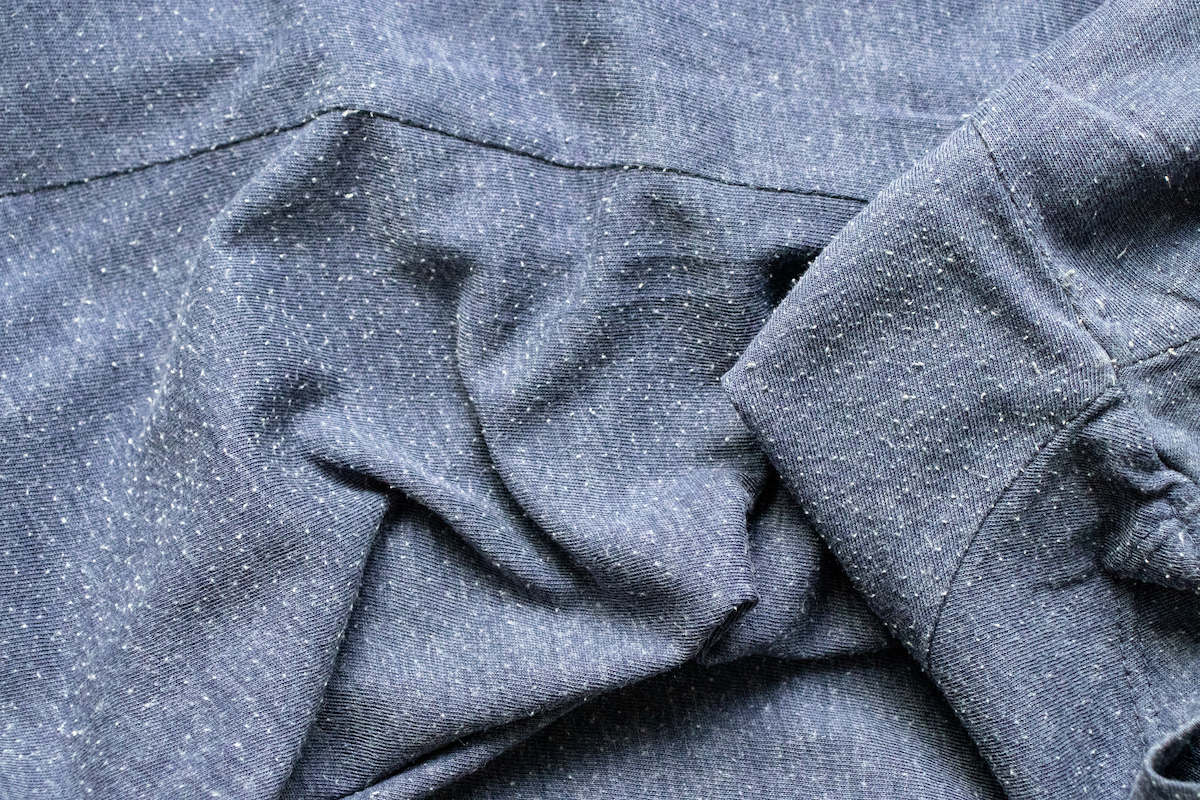

We may earn revenue from the products available on this page and participate in affiliate programs. Learn More ›
After a few washes, once-pristine wool or cotton fabric often grows visibly fuzzy. The all-too-common tragedy of pilling fabric has ruined many a favorite sweater, but it doesn’t have to be this way. If you’re looking for how to get rid of fuzz on your clothes, there are several effective solutions—including one everyday item that’s likely sitting in your medicine cabinet. Believe it or not, the safety razor in your bathroom can effectively remove pilling from clothes in a pinch!
What Is Pilling?
It’s first worth delving into what causes pilling on clothes. The everyday use and care of clothing, bedding, and other fabrics can cause their fibers to wear, break, and tangle together, resulting in the fuzzy, uneven look of pilling. Some materials are more likely to pill than others; knitted and blended fabrics are pilling magnets compared to wovens like satin or denim. There are even materials manufactured to prevent any fuzz from accumulating on clothing and blankets in the first place, such as anti-pill fleece.
3 Steps to Remove Pilling From Clothes
While fabric shavers and sweater combs are designed to remove pilling from clothes, you can also DIY the fuzz right off of your garments using a common safety razor.
However, much as you should be careful when shaving at the sink or in the shower, exercise caution when de-pilling clothes with a razor to avoid injuring yourself or damaging the fabric. People with neurological disorders, nerve damage, or arthritis affecting the hands or arms may require assistance or choose to use a dedicated de-pilling tool instead.
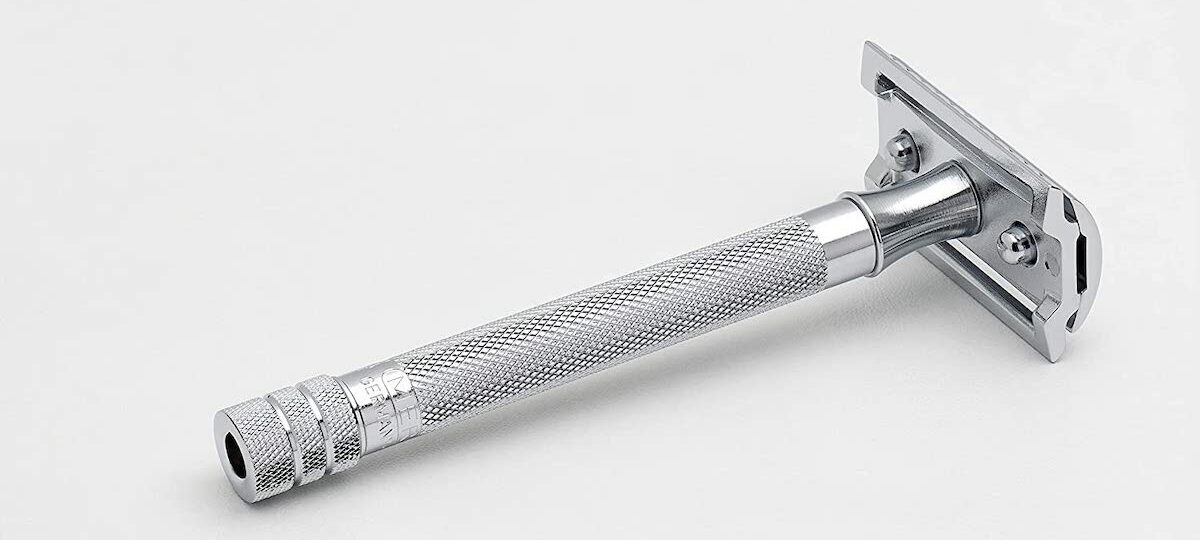
SUPPLIES
– Scissors
– Safety razor
– Lint roller
STEP 1: Lay the garment on a flat surface and trim any longer loose fibers.
Before you begin, lay out your pilled garment on a table, counter, or other hard flat surface you can work on easily. If the fabric has any loose threads or particularly prominent pills, use scissors (ideally sewing scissors or a pair with similarly short blades) to trim these fibers. This step is optional, but doing so can make the actual work of shaving the fabric go much more smoothly and reduce the risk of creating snags or damaging the fabric.
STEP 2: Gently shave the pilled fabric with a safety razor.
Using a safety razor (a reusable razor is recommended, but disposable razors work just as well), pull an area of the fabric surface taut and begin gently shaving it with short, light strokes. It’s better to start at the top or bottom of a garment and work in rows or columns, especially for fabric with fewer or harder-to-see pills.
Piles of pill shavings will begin to appear as you work, so use a lint roller or adhesive tape to keep the fabric clear of debris. Keeping the garment surface flat and using a light touch can prevent accidental tears or cuts while shaving, and making small upward or downward strokes with the razor helps with this, as well.
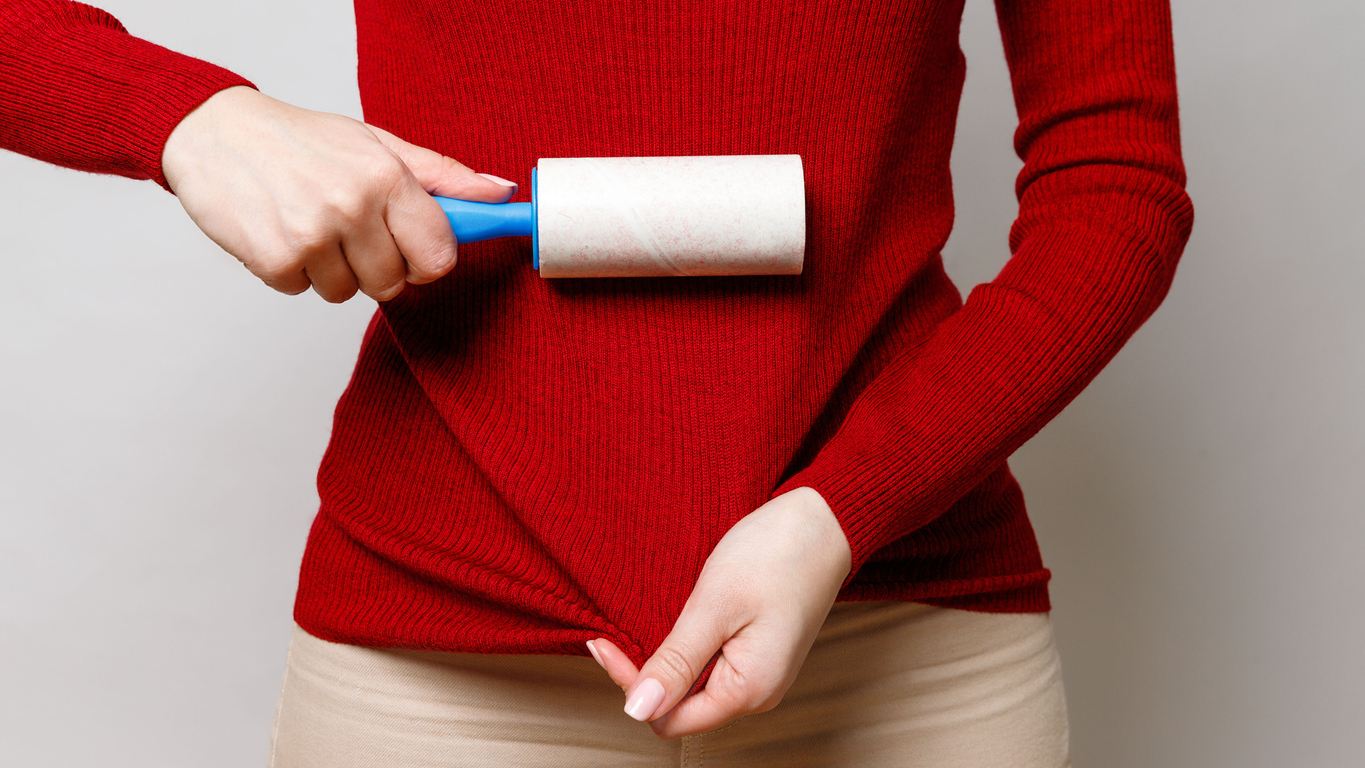
STEP 3: Clear away the pilling shavings.
Once the entire fabric surface has been shaved or you’re satisfied with the amount of pilling removed, some fiber shavings will likely be left clinging to the garment (even if you removed residue as it accumulated). Using a lint roller or tape, go back over the garment surface to pick up any remaining pill shavings, which can obscure the results of your work. You may even notice some spots still in need of further shaving during this process.
Simply shaking out your de-pilled clothes and sweeping up the shavings from the floor is also an option, but it’s less thorough and could leave behind some fabric shavings. Regardless of which clean-up method you choose, you should be left with a relatively pill-free garment!
RELATED: How To: Unshrink Clothes
Other Ways to Remove Pilling
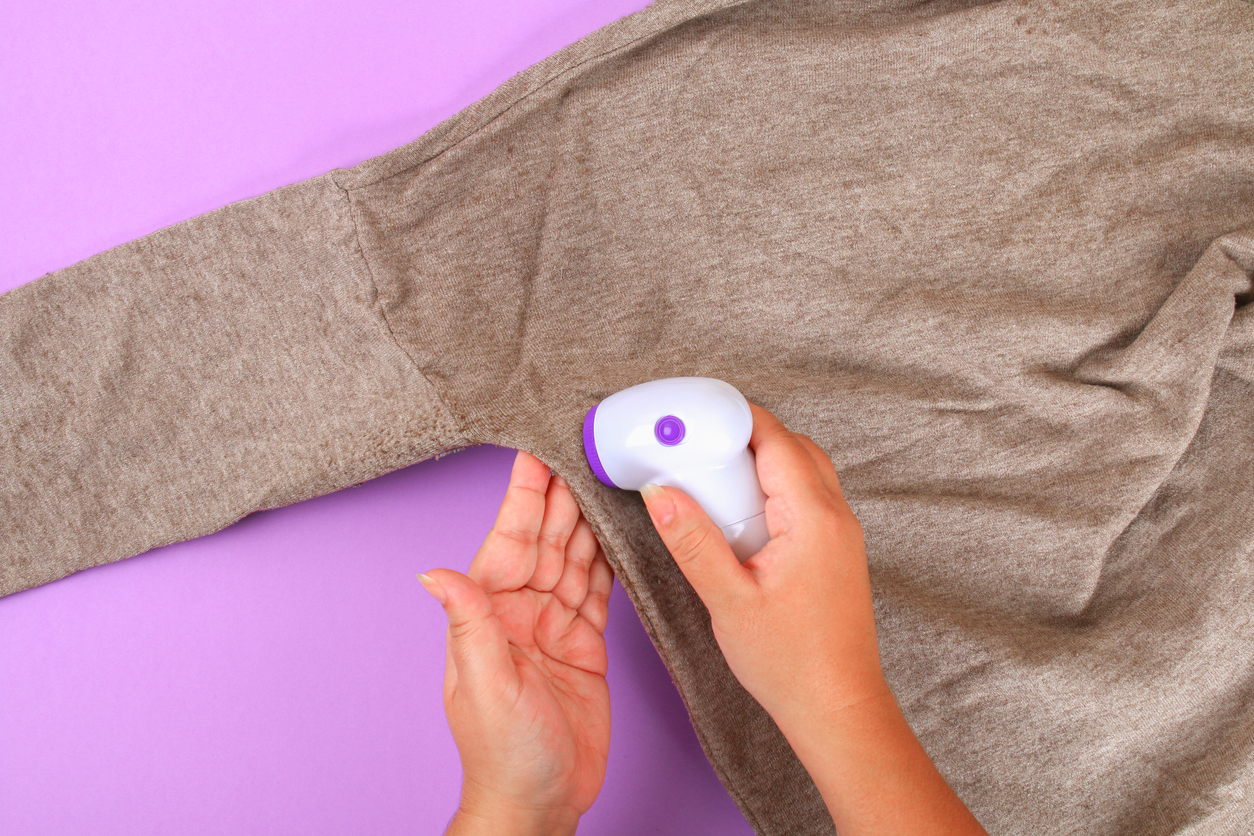
Of course, there are other ways to remove pilling from clothes—using a safety razor is simply one of the most convenient. You may find it worthwhile to pick up one of these tools specifically intended for de-pilling fabric, all of which are inexpensive and reusable.
Fabric Shaver
A fabric shaver is perhaps the best option when it comes to removing pilling from almost any type of fabric. These wireless handheld tools, such as this simple Conair fabric shaver, a favorite in our researched buyer’s guide, are easy to use and collect fiber shavings in a lint catcher as you work.
RElATED: 14 New Things You Can Do with an Old Sweater
Sweater Comb
Using a sweater comb (also known as a fabric comb) is a time-tested way to remove pilling from clothes. Both types, multi-fabric sweater combs and cashmere/fine wool combs, are stocked by Comfy Clothiers in attractive beechwood and cedar finishes.
Pumice Stone
Another staple toiletry you can use to de-pill your clothes is the humble pumice stone, and some are even designed and sold expressly for clothing care. Molly’s Suds Fabric & Sweater Pumice can be used similarly to a safety razor (i.e., gently), and these long-lasting stones are made using recycled glass.
How to Prevent Pilling on Clothes
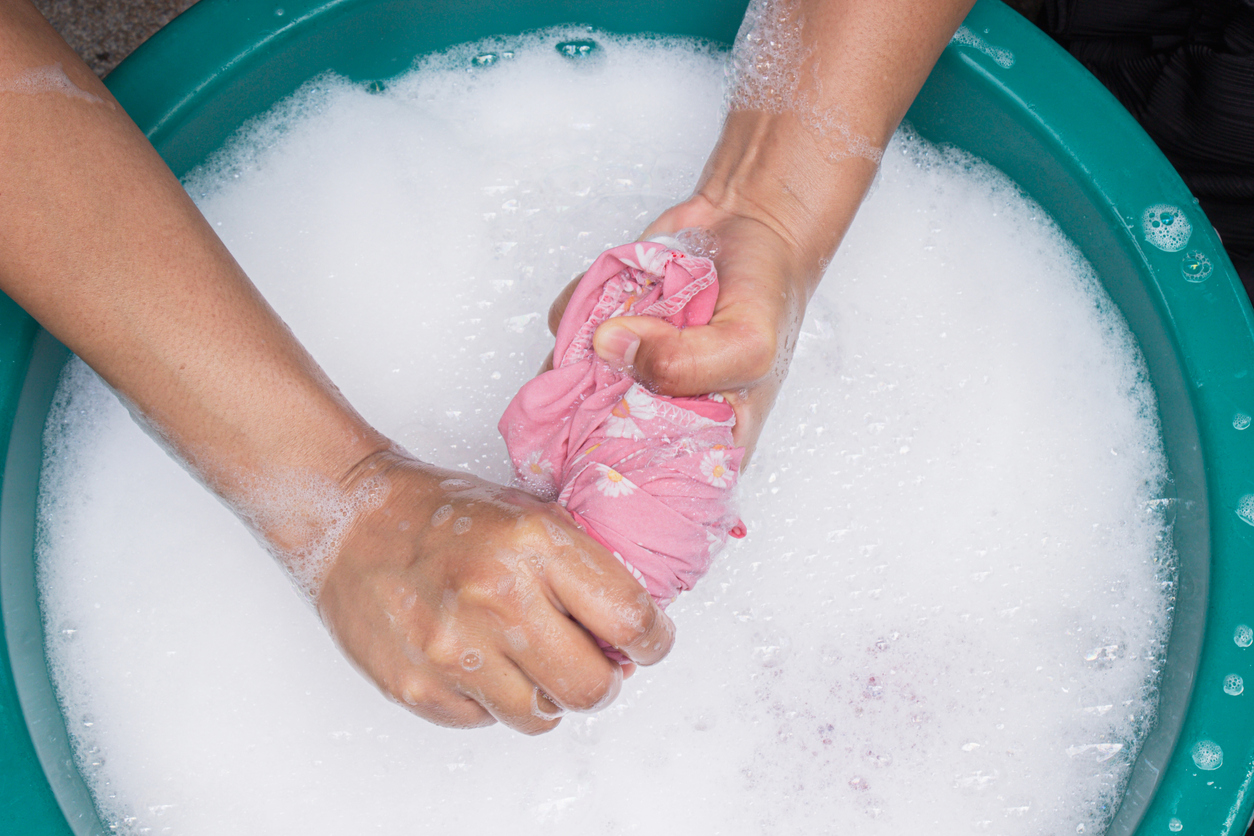
The ultimate way to keep pilling off of your clothes and household fabrics is to take preventative steps to stop the troublesome fuzz from accumulating in the first place. For clothing, this starts at the retail rack, as it’s better to avoid knitted (particularly loose-knit) sweaters and fiber blends in T-shirts if you can’t stand pilling. Instead, opt for woven materials and labels indicating a garment is 100 percent cotton, polyester, etc.
Another culprit for clothes pilling could be your laundry habits. A gentle wash cycle with like materials or hand-washing is a safer option for pill-prone knitted sweaters, shirts, and blankets. To spare these delicate fibers from unnecessary friction, they should be dried separately on short, low-heat cycles, or air-dried flat or on a drying rack.
